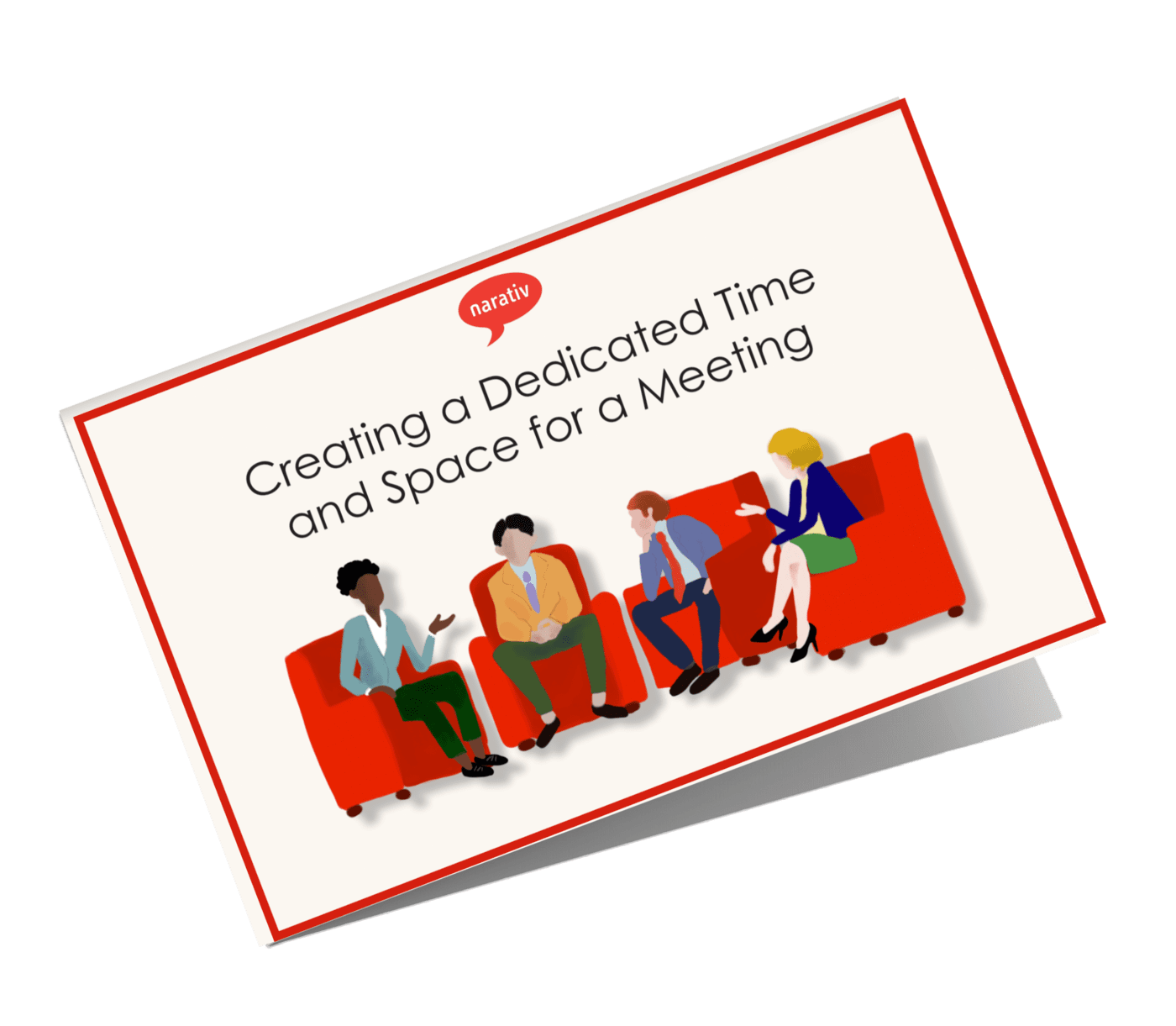As humans, we remember stories better than anything else, so it only makes sense to engage employees through storytelling at work. But it’s not easy to find the right stories and storytellers—and it’s even more challenging to make the stories themselves engaging! Here are 6 steps we at Narativ follow to capture stories as part of a storytelling employee engagement campaign:
1. Listening: How Do Employees Engage with Mission, Values, and Role
To begin your storytelling employee engagement campaign, listening for the stories that need to be told is the first step. This is part of what we call the “excavation process.” In order to find relevant stories to tell, you must ascertain whether employees understand the mission and values of the organization, and how they engage with that vision. This includes employees’ understanding of their own roles and that of their teams, within the context of the organization as a whole. Are there any blockers getting in the way of engaging with the mission and values? The trick to successful excavation is to keep it open, approach the process without pre-concepts, and let people speak freely.
Undertake a listening tour of your organization. Identify the people you need to interview and ask these essential questions:
- What is your understanding of the mission, and how do you observe it in action?
- What is your level of identification with the company’s values? What are examples where you see those values being embodied?
- How do you see your role in the organization?
You will quickly see where your employees are on the spectrum of understanding. How that spectrum is weighted will tell you what employees need to learn about most, and therefore what stories they need to hear.
As a side note, if your office is fully remote or hybrid, or if you are a larger company where in-person interviews might prove too challenging, polls, questionnaires, or Zoom interviews work just as well for this stage of the process!
2. Analysis: Identify Dominant Narratives and Themes
During your listening tour, you will hear anecdotes full of rich information that indicate what is working or not working within the organization in terms of employee understanding and engagement.
These will coalesce into certain themes, likely regarding specific cultural issues or stumbling blocks to efficiency within a department. Make sure to identify the themes you hear the most. With those dominant narratives in hand, you’re ready to start harnessing the power of storytelling in business.
3. Storytellers: Choose a Spectrum of Representative Storytellers
Too often, the leaders of companies tell stories that are not about themselves, but rather about people in their organizations. If you are telling a story about someone in your organization, why not ask them to tell it?
It’s far more engaging to hear a first-hand account, and it will increase the sense of ownership on the part of the person you ask to tell that story. It will make them proud to be selected, while you will get a chance to show it’s not just your own leadership in the spotlight.
By inviting others to share their stories, you’re sending the message that everyone in your company has a voice, and you’re interested in hearing from all of them. Choose storytelling representatives from a variety of experiences—varying roles, seniority, demographics, etc.—and then prompt them to tell a story using the themes you identified earlier.
4. Train Storytellers in a Storytelling Methodology
At this point, you have identified relevant themes, storytellers, and the stories they will tell. These should be captured on audio, video, or other means, but you will soon see that the people you’re asking to tell a story have varying degrees of storytelling ability.
Some are naturals; others are extremely shy or unsure, lacking confidence when it comes to presenting themselves; while most are somewhere in the middle. You don’t want to only have people who are confident presenters because you’ll end up with a selection that’s not representative of your organization as a whole.
You must be willing to coach people to craft a story that’s going to be compelling and engaging. Don’t just rely on their innate sense of what a story is, as this will give you mixed results. Use a consistent methodology, and help them craft their story. They will need a listener, even as they’re practicing, and that person should be you. For a consistent method, check out this article on sense-based storytelling.
5. Organize Training Modules Based on Stories
We learn from stories. Use that principle to create learning content in a modular way, where the stories are at the core of each learning module.
For instance, if one of your themes is “overcoming challenges in the field” then you might include a story from someone about a time they managed to get out of a tricky situation. Imagine a video of that story as the first thing people see in the module, then a summary of lessons learned after the story, and finally a quiz to reinforce the points in the user’s mind.
6. Deliver and Engage
Storytelling employee engagement is not a “one and done” deal. It must be a living system that evolves as the organization expands, contracts, and changes. New people need to feel like their stories matter. There’s no better way for them to express what they do than by having someone listen to their stories.
Set up periodic storytelling sessions as a component of your internal content-delivery strategy. Ask for responses and input in story form. Then, let employees know they may be part of the next generation of employee engagement stories. Again, you’re communicating that you are interested in everyone’s voice. Keep listening for new themes and new stories will emerge—as well as new storytellers.
Build a Work Culture Around Storytelling Employee Engagement
Stories are how we make sense of the world. They transcend cultural, language, and socio-economic barriers and differences. Our brains are hardwired for stories, and we all respond to and engage with them. It’s what connects us as human beings. By taking control of the narrative in your organization and engaging everyone to tell stories, you are building a culture that is responsive and made to evolve.
Through this effort, you are creating a library of stories that will make up the larger institutional narrative of your organization. And you are giving everyone an opportunity to experience “the bliss of storytelling.” Murray Nossel, Ph.D., coined this term to express the sense of freedom, engagement, and social belonging created by listening and storytelling.
Your story library gives you new communication options. For example, if society is talking about diversity and inclusion in a brand new way, you will have the ability to draw from that library to authentically demonstrate your approach. If you don’t have those stories, you now have a way to find and craft them and a place to make sure they are heard. Stories are alive, part of the never-ending movement of your organization’s culture. Don’t mistake static narratives for brand identity. Listen and grow.
If you would like to learn more about how Narativ can help you with your company’s storytelling employee engagement campaign, visit us here.




